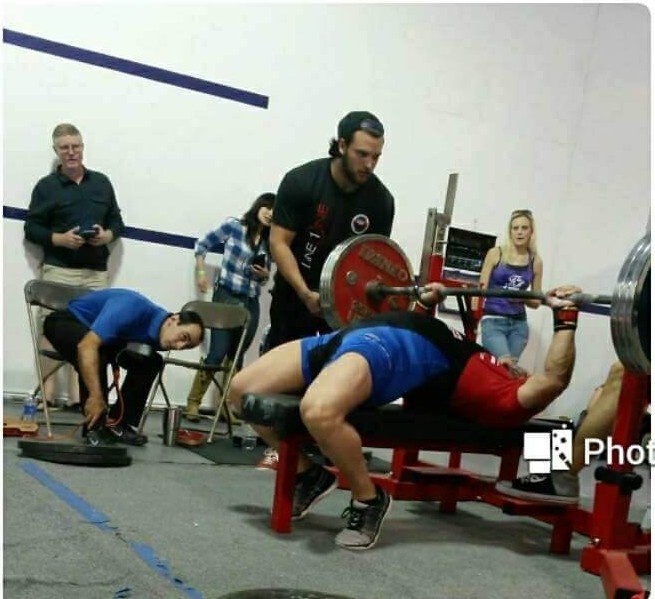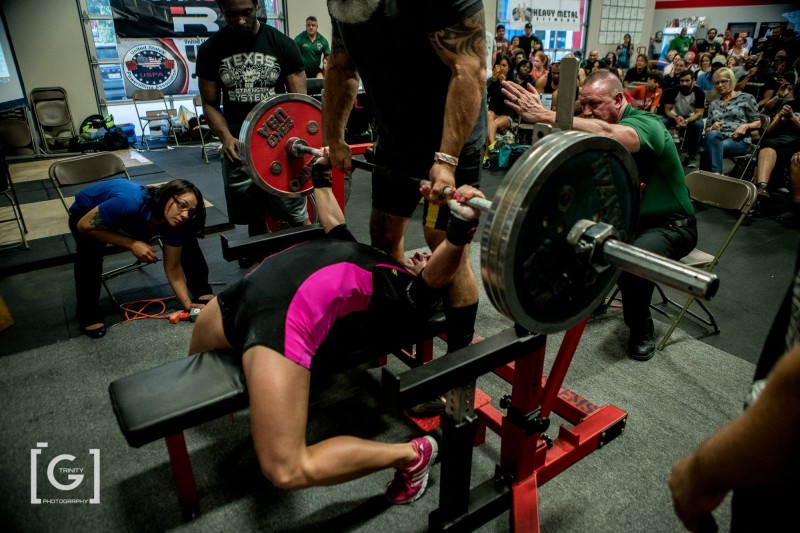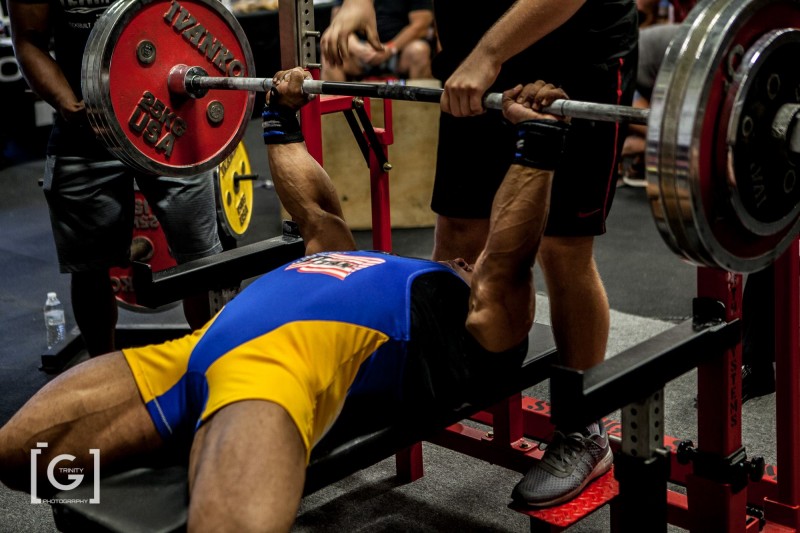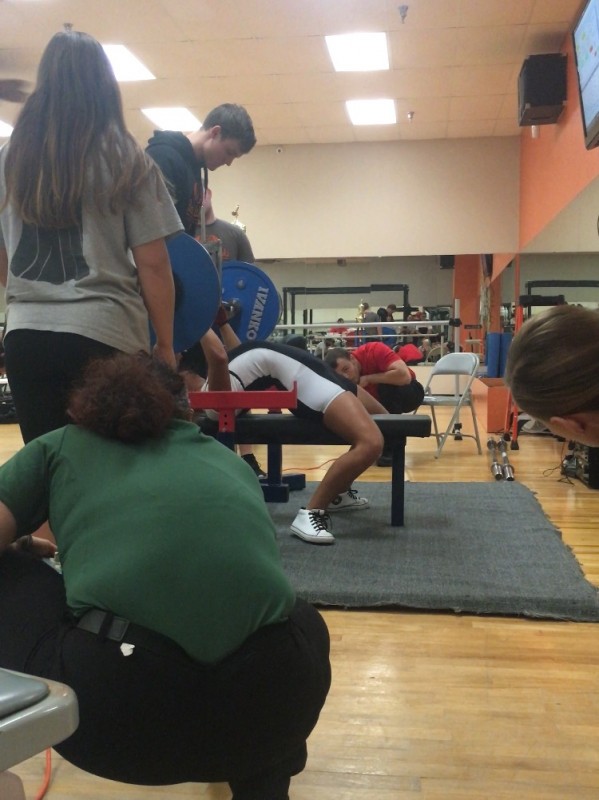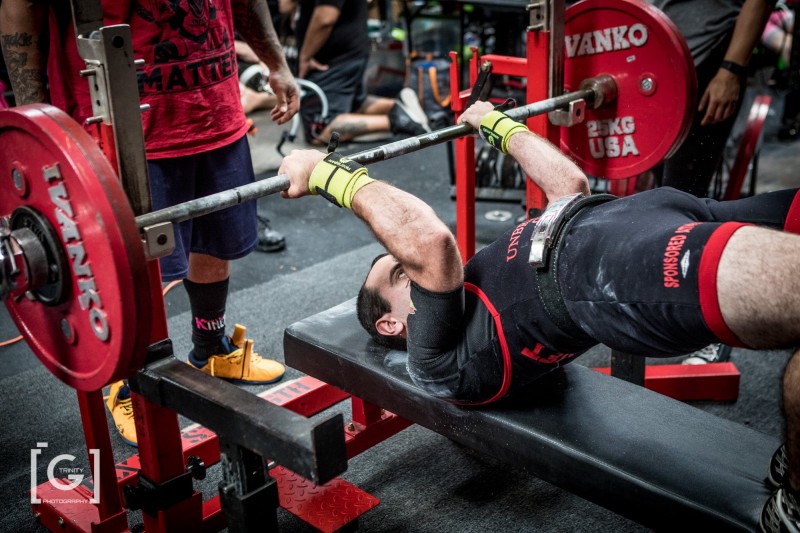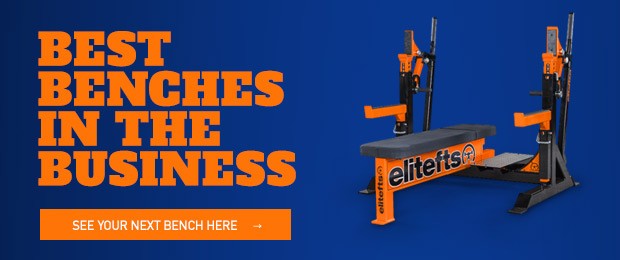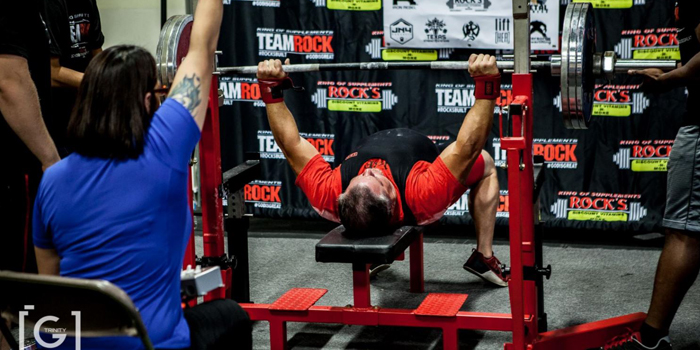
What happens after a squat? It is bench press time! That is what I will write about today.
This is the article series I prepared for you to show you the lifts from the perspective of the judge’s chair. In the first part, about the squat, I explained why this perspective is peculiar and why we learn so much from it. Most importantly, though, I explained why the judge’s perspective can help you, the lifter, improve your performance.
A judge sees:
- Hundreds of lifts during a small meet, and thousands during a big meet. That provides a lot of perspective on anatomical differences and their relationship with lifting mechanics. Even if the judge has no biomechanics training, he or she develops an “eye” for obvious mechanical disadvantages. Most of the time, it is possible to predict when a lift will fail based on how these disadvantages are managed at the platform.
- An enormous variety of non-lifting behavior, including pre-lifting rituals, focus signs, lack-of-focus signs, nervousness, excessive psyching up, insufficient psyching up, confusion, terror, fun, etc.
- Mistakes. All sorts of mistakes.
If a judge is lucky, he or she may have the opportunity to “fix” a mistake during that one minute the lifter has to ask why he got red-lighted. I actually invite the lifter to my chair to do it. Sometimes I’m successful. Sometimes I’m not.
WATCH: Developing Powerlifters Through the Role and Responsibilities of a Meet Director
There is a philosophical point here about an ethical yet compassionate judge: it is the pride over “work well done." Consistent and knowledgeable judges (frequently seen as “strict”, which is not accurate) feel true joy in throwing a white light on a very good lift. Just look at their faces. The lifter is most probably unknown to him, but he feels pride (for the lifter) over “work well done.”
With that in mind, let’s see how we can help you get your “work well done.”
The Platform Arrangement
The platform arrangement doesn’t change during a powerlifting meet, except that on the bench press, the lifter is not facing the judge. He instead faces the ceiling, or the bar, or nothing. That makes a difference. While on the squat and the deadlift the central judge’s hand commands are seen by the lifter, they are not on the bench press.
There are two important considerations here. First, the hand commands (“start”, with a down hand movement, “press”, with an up hand movement, and “rack”, with a backhand movement) are still important for the sake of the other judges and also the spectators. Beating a command (executing something unauthorized) may be cause for disqualification of a lift, so everybody needs to see the commands over the screams of the crowd.
The second consideration is that the central judge is usually significantly louder during the bench press because he wants to make sure the lifter can hear him. That is especially relevant if the lifter informs the judge that he has a hearing impairment (then we really scream our lungs out).
Just like the squat, the platform includes spotters, whose hands are very close to the bar’s sleeves, so that they are able to make a quick catch if the lift fails. The platform also includes the “hand-off man” (we’ll talk about hand-off later). At our organization we ask the hand-off man, if he is not one of our staff, to remain with one foot at the edge of the platform so that he may aid in the case of a safety issue. In the following video, lifter Chris Blanton is shown approaching the bar and setting up for his bench press. Handler Tom Saul is shown handing off the bar, taking the required distance (the hand-off man must be completely off the vision of the central judge), remaining at safety distance, and then helping with the rack. The last frame shows central Oklahoma judge John Jones, where you can estimate his distance from the bench. Chris does not have a hearing impairment and John is a male judge, so his voice is louder and easier to hear than a female judge.
Christopher Blanton lifting at B&W Bodyworks Meet at Stillwater, Oklahoma, by USPA Oklahoma, September 16, 2017. Central judge John Jones.
What Each Judge Sees
I think most of you in the gym have heard the following answers to the question, “Did I reach depth?” for the squat:
- “I don’t know, I was behind you.” (Spotting)
- “I don’t know, I was in front of you.” (Working the monolift, giving commands, etc.)
For, “Did my butt come off the bench?” you’ve probably heard, “I don’t know, I was handing off the bar to you.”
There is a reason why we have three judges in different places: certain things simply can’t be seen or judged without “reasonable doubt” from certain positions. A central judge will not judge depth on the squat unless it is ridiculously high; a central judge will leave it to the side judge to red-light incomplete deadlift lockout if he is uncertain; a central judge won’t judge the lifter’s butt coming off the bench on the bench press.
A side judge may or may not be well positioned to see slight downward bar movement. In certain aspects, side judging is harder and more draining than central judging.
On the bench press specifically, the side judge sees much more. One of the reasons a side judge moves so much more than the central judge is that he is observing many things from different angles. A butt raise requires you to have your eyes aligned in such a way that you can actually see light coming from the other side, under the lifter’s butt.
Downward movement can be identified when the tip of the bar sleeve moves down, even when you don’t have a privileged view of the whole bar.
Bobby Morgan lifting, Gary Hunter judging. USPA Houston Fall Classic 2015, Spring, Texas. Credit: Megan Barrera-Morgan
Megan Barrera-Morgan as side judge, Alan Aerts as central judge. Bench Press and Deadlift World Championship, 2016. Credit: Trinity Greer of Strength Power Fitness
The Hand-Off: Stability Is The Mother Of Strength
I’ve repeated this so many times that my students say it is a mantra: “Stability is the mother of strength.” And it is, for all five lifts. But let’s focus on the bench press, which shares, with the squat, the fact that it starts with a deceleration of mass. Think about it: you are not “lifting” anything in the first part of a bench press or a squat. You are actually “unlifting.” You are decelerating the bar with control, employing whole kinetic muscle chains so that the “athlete-barbell-system” (ABS) finishes the downward movement (eccentric phase) in perfect mechanical advantage to perform the concentric phase. That can only be accomplished if the start of the downward movement is from a completely controlled and stable position.
Novice lifters underestimate the importance of controlling the bar at the start position. If they are not being handled by their coach or training partner, the hand-off can create improper starting position. The “unexpected hand-off man” may either let go of the bar too early (so that the lifter has to re-adjust dorsal stabilizers under a maximal weight, which never works too well), force it forward or backward against the lifter’s habitual position, or, worse, “lift-off” instead of “hand-off.” He may pull the bar so that the lifter’s shoulders are disturbed and his scapular retraction spoiled. All these things frequently end up in an unsuccessful lift.
Part 1: From the Judge’s Chair: The Squat
Certain people in the sport, whether coaches, lifters, or old-time handlers, are so skilled that they can figure out a novice’s “sweet spot” just by looking at their setup, and then give a perfect hand-off. These are rare people and they have usually been around the sport for many years. Don’t count on a few of them being available for you.
If you are alone, the first thing you want to do at the warm-up area is pick someone who agrees to help you and rehearse the hand-off many times with a light weight. Then have this same person, and only him, hand-off to you during the whole warm-up and the meet. Believe me, I’ve been there. I owe some of my most successful lifts to people who were total strangers before, but sufficiently skilled that a little rehearsal made it perfect, and I’ve also missed lifts because of bad hand-offs.
Observe the hand-off man below releasing the bar at the perfect start position to a lifter whose dorsal stabilizers are completely tight, shoulders glued to the bench:
Bench Press and Deadlift World Championship, 2016. Credit: Trinity Greer of Strength Power Fitness
Dorsals, Arch, Glutes, And Legs — Choose Your Battles
One of the things I try to tell novice lifters is that it takes time for a certain motor task to become automatic. Only then can we work to improve it, changing a stance or a grip and then waiting, again, for that to become automatic. This is related to the process of motor learning, which starts mostly cortical (“thinking”) and must become more extra-pyramidal (“performing”).
There are too many things happening at the same time for the perfect execution of any lift. What we often see from the judge’s chair is an over-thinking about something that is not decisive for the effectiveness of the lift.
One example is the over-concern about the bench arch. The arch is the hyperextension of the spine supported at one point on the dorsal area and at the other point on the glutes. The glutes are part of a set of levers that begins with the foot. Its contribution to the effectiveness of the bench press has been called “the leg drive,” up to now incompletely understood or described. What matters is that, under optimal conditions, the glutes remain on the bench, the posterior chain is very tight, and the lift is successful.
The other relevant (actually much more) component of the bench press effectiveness is dorsal stability. Dorsal stability is provided by scapular retraction, or scapular adduction and depression. It must remain so during the whole lift.
The arch is considered a great competitive advantage because it shortens the bench stroke. However, you have no use for a short bench stroke if you are not strong enough or stable enough to perform the necessary triceps extension of the concentric phase.
It is very common to see novice women (because of their greater mobility) spending a long time forcing their arch to press not more than 50 kilograms/110 pounds. Yes, there are great benchers with great arches, but there is no correlation between arching and bench efficiency. There is a high correlation between benching efficiency and stability, though.
So while the setup is always of fundamental importance, your main concern is finding one that allows you the greatest possible dorsal tightness and glute control. You can work on your arch gradually, as you achieve stability.
John Jones and I as side judges at B&W Bodyworks Meet at Stillwater, Oklahoma, by USPA Oklahoma, September 16, 2017. Credit: Victoria Powell.
USPA Corpus Classic, 2016, Corpus Christi, Texas. Gary Hunter setting up to lift. Credit: Trinity Greer of Strength Power Fitness
Butt Raise: Hypotheses And Possible Quick Solutions
I would say other than failure (to complete the lift), the main reason for disqualification on the bench press is butt raise. There are several reasons why your butt goes up. The most important is usually insufficient dorsal stability (scapular adduction and depression), which is why we see that so much among equipped heavier lifters.
Again, it’s a complicated topic, but let’s reduce it to a few issues for the sake of simplicity. There are two points of contact of the lifter’s body with the bench that provides stability: the dorsal area and the glutes. If the dorsal area is not tight enough (which can happen because the weight is too heavy, because the bench shirt is disturbing it, or just because you aren’t managing to keep it tight), the ABS stability will be dislocated to the glutes and posterior chain. Depending on many factors, strength irradiation will lead to contraction of other parts of the chain and the butt will be raised off the bench.
For experienced, heavy lifters, it is very hard to fix it once it is manifested at the platform. That’s something you need to work on before the meet and detect the trend at the gym.
For novice lifters, you will be surprised, but usually just telling them to be more aware of the butt and back fixes it, unless the novice lifter is struggling with a weight too heavy for them and their back muscles are still not that strong or trained for isometric contraction.
Last Words: Bombing Out Because of a Bad First Attempt
Why we never exactly know what our 1RM is at a specific moment is the subject for not one but many articles. Assume I’m right, and that your first attempt as measured a few days before is inaccurate. It may be false for the complicated reasons I am not going to write about now, or it may be wrong because your weights on training were not calibrated (usually 10% lighter), because you’re freaked out, because you made weight in an aggressive way and lost strength, or because of whatever other reason.
The saddest thing a judge can see is a failed first attempt where the lifter grinds all through the lift and misses. There may be technical issues there, but the chances of fixing those are small. The fact is that the first attempt was too heavy.
How do you prevent that? Easy — at the warm-up room! I don’t believe any federation got rid of the rule that allows the lifter to change their first attempt up to five minutes before the beginning of their flight. If, at the warm-up area, your “80%” warm-up feels horribly heavy, you need to change the first attempt. Whether it is for panic or for the reasons we are not discussing here, just getting it done and remaining in the game will help a lot.
If you are a more experienced lifter and you think you can’t have such a light first attempt because the jumps will be too big, study “post-activation potentiation” (between attempts). It doesn’t solve the problem, but it can help you if you are considering going against your normal strategy of smaller jumps and trying bigger ones.
Just don’t bomb out.
Images courtesy of Trinity Greer of Strength Power Fitness (Trinitygreer@me.com; http://www.strengthpowerfitness.com) Megan Barrera-Morgan, Bobby Morgan, Christopher Blanton, Gary Hunter, Alan Aerts.










